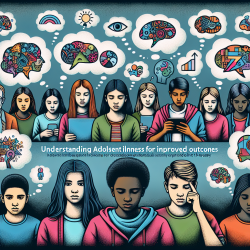Introduction
Primary Progressive Aphasia (PPA) is a neurological syndrome characterized by the gradual impairment of language capabilities. This condition is classified into three main variants: non-fluent/agrammatic (nfvPPA), semantic (svPPA), and logopenic (lvPPA). Each variant exhibits distinct linguistic features, patterns of brain atrophy, and underlying pathologies. A recent study titled "Longitudinal gray matter contraction in three variants of primary progressive aphasia: A tensor-based morphometry study" provides valuable insights into the progression of these variants over time.
Study Overview
The study investigated 28 patients with PPA (8 with nfvPPA, 13 with svPPA, and 7 with lvPPA) alongside 29 neurologically healthy controls. Participants underwent longitudinal MRI scans, neuropsychological, and language testing at baseline and after one year. Tensor-based morphometry (TBM) was employed to map the progression of gray and white matter atrophy over this period.
Key Findings
- Non-fluent Variant (nfvPPA): Showed gray matter atrophy progression in the left frontal and subcortical areas, with a decline in motor speech and executive functions.
- Semantic Variant (svPPA): Exhibited atrophy progression in the medial and lateral temporal lobes, with a decline in semantic memory abilities.
- Logopenic Variant (lvPPA): Demonstrated atrophy progression in lateral/posterior temporal and medial parietal regions, with a decline in memory, sentence repetition, and calculations.
Additionally, all three variants showed significant white matter volume contraction in the cortical areas mentioned above over the one-year period.
Clinical Implications
Understanding the distinct patterns of neuroanatomical contraction in PPA variants is crucial for speech-language pathologists and other practitioners. These insights can guide the development of targeted intervention strategies and inform caregivers about the potential challenges associated with each variant.
For instance, practitioners can tailor speech therapy to focus on improving motor speech and executive functions in nfvPPA, semantic memory in svPPA, and memory and repetition skills in lvPPA. Furthermore, tracking disease progression can help predict the time course of symptoms, aiding in better management and support for patients and their families.
Encouraging Further Research
The study highlights the need for further research into the progression of PPA variants. Larger sample sizes and longer follow-up periods could provide more comprehensive insights into the cognitive and anatomical changes over time. Additionally, exploring the molecular mechanisms underlying these changes could lead to new therapeutic targets.
For practitioners interested in delving deeper into this topic, accessing the original research paper is highly recommended. The detailed methodology and results can provide a more nuanced understanding of PPA progression and its implications for clinical practice.
To read the original research paper, please follow this link: Longitudinal gray matter contraction in three variants of primary progressive aphasia: A tensor-based morphometry study.










